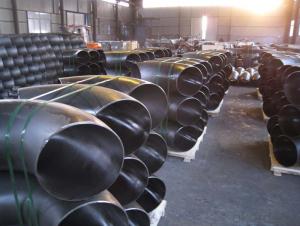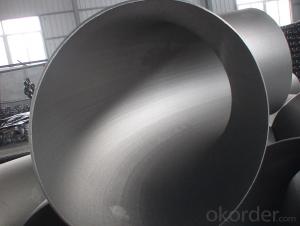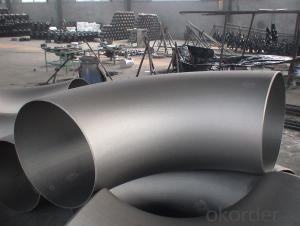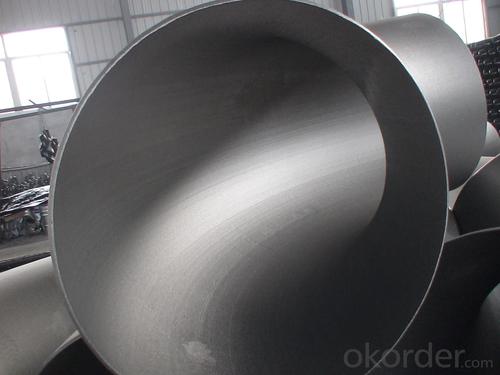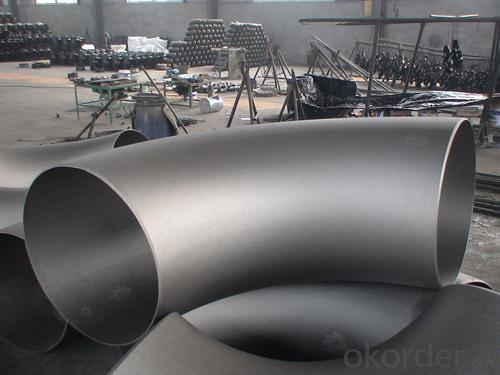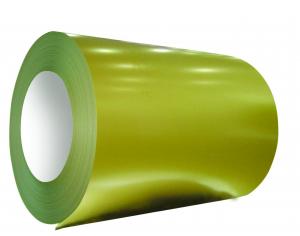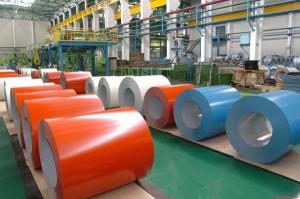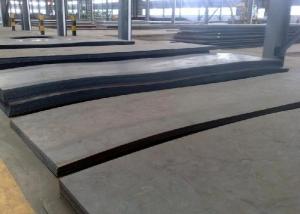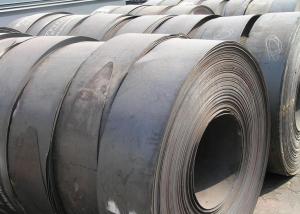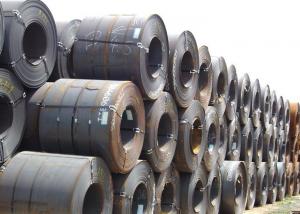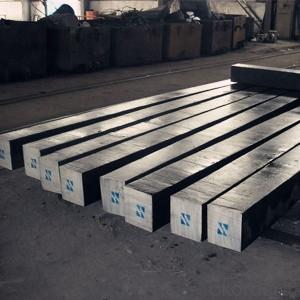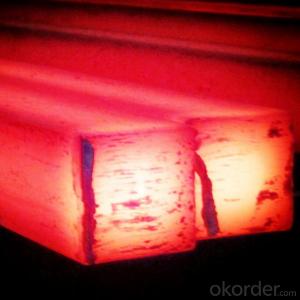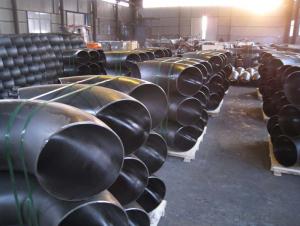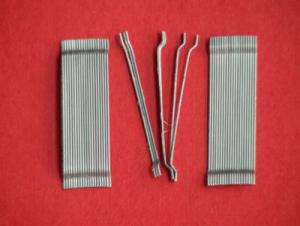Carbon steel pipe fittings FLANGE 1/2''-42''
- Loading Port:
- China Main Port
- Payment Terms:
- TT OR LC
- Min Order Qty:
- -
- Supply Capability:
- -
OKorder Service Pledge
OKorder Financial Service
You Might Also Like
Pipe fitting is the occupation of installing or repairing piping or tubing systems that convey liquid, gas, and occasionally solid materials. This work involves selecting and preparing pipe or tubing, joining it together by various means, and the location and repair of leaks.
Pipe fitting work is done in many different settings: HVAC, manufacturing, hydraulics, refineries, nuclear-poweredSupercarriers and Fast Attack Submarinescomputer chip fab plants, power plant construction and other steam systems. Pipe fitters (sometimes called simply "fitters") are represented in the USA and Canada by the United Association of Journeymen and Apprentices of the Plumbing and Pipe Fitting Industry of the United States and Canada.
Fitters work with a variety of pipe and tubing materials including several types of steel, copper, iron, aluminium, and plastic. Pipe fitting is not plumbing; the two are related but separate trades. Pipe fitters who specialize in fire prevention are called Sprinklerfitters, another related, but separate trade.
Materials, techniques, and usages vary from country to country as different nations have different standards to install pipe.
Elbow are an English alternative rock band consisting of Guy Garvey (vocals, guitar), Richard Jupp (drums, percussion), Craig Potter (keyboards, piano), Mark Potter (guitar, backing vocals), and Pete Turner (bass guitar, backing vocals). They have played together since 1990, adopting the Elbow band name in 1997, and have released six studio albums: Asleep in the Back (2001), Cast of Thousands (2003), Leaders of the Free World (2005), The Seldom Seen Kid (2008), Build a Rocket Boys! (2011), and The Take Off and Landing of Everything (2014). All of their studio albums, as well as B-sides compilation Dead in the Boot (2012), have placed in the top 15 of the British album chart and seven of their singles have placed in the top 40 of the British singles chart.
In 2008 Elbow won the Mercury Music Prize for their album The Seldom Seen Kid, and in 2009 they won the Brit Award for Best British Group In 2012 they released "First Steps", the BBC theme for the 2012 London Olympics
Specifications
Standard: ASTM A234 WPB, JIS, DIN, EN, GOST
Use for Oil, Gas, Subwatering act.
45/90/180 degree, LR/SR Elbow
ASTM A234 WPB ELBOW :
| ||||||||
| we are manufacturer for carbon steel pipe and fittings,like 45deg,90deg,180deg,L/R OR S/R,bend , | ||||||||
| equal or reducing tee, CON reducer, ECC reducer, pipe cap,flange. | ||||||||
| CON AND ECC REDUCER: CARBON STEEL,STAINLESS,STELL,ALLOY STEEL | ||||||||
| NOMINAL DIAMETER | BIG OD1 | SMALL OD2 | HEIGHT(MM) | |||||
| MM | SERIES A | SERIES B | SERIES A | SERIES B | 51-711 | |||
| 25*15--1500*1400 | 33.7-1524 | 32-1520 | 21.3-1420 | 18-1420 | ||||
| MATERIAL: A234WPB,A283,A105,A53,A106,API5L | ||||||||
| STANDARD: ASTM/ANSI,DIN,ISO,GB,JIS,BS ,GOST | ||||||||
| OTHERS: | ||||||||
| 1. Special design available according to requirement | ||||||||
| 2. All the production process are made under the ISO 9001:2000 strictly. | ||||||||
- Q: What are the properties and characteristics of different steel products?
- The properties and characteristics of different steel products can vary depending on factors such as the grade of steel, its composition, and the manufacturing process used. However, some common properties and characteristics of steel products include: 1. Strength and Durability: Steel is known for its high strength and durability, making it suitable for applications requiring structural integrity and resistance to wear and tear. 2. Corrosion Resistance: Stainless steel products possess excellent corrosion resistance due to the presence of alloying elements such as chromium, which forms a protective layer on the surface, preventing rust and corrosion. 3. Versatility: Steel products are available in various forms, including sheets, bars, pipes, and tubes, offering versatility in terms of design and application possibilities. 4. Heat Resistance: Certain steel alloys, such as carbon steel, can withstand high temperatures without losing their structural integrity, making them suitable for applications in heat-intensive environments. 5. Formability and Weldability: Steel can be easily formed, shaped, and welded, allowing for customization and fabrication of products to meet specific requirements. 6. Weight-to-Strength Ratio: Steel has a favorable weight-to-strength ratio, meaning it can provide high strength while being relatively lightweight compared to other materials. 7. Recyclability: Steel is a highly recyclable material, making it an environmentally friendly choice as it can be reused and repurposed without losing its properties. It is important to note that the specific properties and characteristics of different steel products can vary depending on their intended use, manufacturing process, and any additional treatments or coatings applied.
- Q: How are steel wires used in various industries?
- Steel wires are used in various industries for a multitude of purposes such as reinforcing concrete structures, manufacturing machinery and equipment, constructing fences and barriers, supporting suspension bridges, and creating electrical cables.
- Q: How is steel sheet metal stamped for automotive parts?
- Steel sheet metal is typically stamped for automotive parts using a process called metal stamping. This involves placing a sheet of steel between two dies and applying immense pressure to form the desired shape. The dies have the desired shape of the automotive part, and the pressure from hydraulic or mechanical presses forces the steel sheet to conform to the shape of the dies, resulting in the stamped automotive part.
- Q: How is steel billet produced?
- Steel billet is produced through a process called continuous casting, which involves melting scrap steel in an electric arc furnace and then pouring the molten steel into a water-cooled mold. As the steel cools, it solidifies into a semi-finished rectangular shape called a billet, which can be further processed into various steel products.
- Q: What is the role of steel in the telecommunications industry?
- Steel plays a crucial role in the telecommunications industry as it is used to construct communication towers and support structures. These structures provide the necessary height and stability for antennas and satellite dishes, allowing for the transmission and reception of signals. Steel's strength, durability, and cost-effectiveness make it an ideal material choice for these applications, ensuring reliable and efficient communication networks.
- Q: What are the different types of steel wires and their uses?
- There are several types of steel wires with various uses. Some common types include carbon steel wire, stainless steel wire, galvanized steel wire, and spring steel wire. Carbon steel wire is widely used for general purposes, such as in construction, fencing, and automotive applications. Stainless steel wire is corrosion resistant and commonly used in industries like food processing, medical equipment, and marine applications. Galvanized steel wire is coated with zinc to prevent rust and is often used for outdoor applications like fencing and electrical wiring. Spring steel wire is known for its elasticity and is used in manufacturing springs, suspension systems, and various mechanical components.
- Q: What are the safety precautions to be followed when handling steel products?
- When handling steel products, it is important to follow several safety precautions to ensure the well-being of individuals. Firstly, wearing personal protective equipment (PPE) such as gloves, safety glasses, and steel-toed boots is crucial to protect against cuts, abrasions, and impacts. Additionally, it is essential to use proper lifting techniques and equipment to avoid strains or injuries. Maintaining a clean and organized work area helps prevent slips, trips, and falls. Furthermore, handling sharp or jagged edged steel with care and using appropriate tools for cutting or shaping minimizes the risk of cuts or punctures. Lastly, it is advised to be cautious of heavy loads and ensure proper equipment is used for lifting and transporting steel products.
- Q: What are the different grades of steel and their applications?
- There are several grades of steel, each with its own unique properties and applications. Some common grades include: 1. Carbon Steel: This is the most common type of steel and is used in a wide range of applications, including construction, automotive, and manufacturing. It is known for its strength and low cost. 2. Stainless Steel: This grade of steel contains a minimum of 10.5% chromium, which gives it excellent corrosion resistance. It is commonly used in kitchen appliances, medical equipment, and architectural structures. 3. Alloy Steel: This type of steel is made by adding other elements such as nickel, chromium, or molybdenum to enhance its properties. Alloy steel is often used in the aerospace industry, automotive components, and machinery. 4. Tool Steel: Designed for making tools, this grade of steel is known for its hardness, resistance to wear, and ability to retain sharp edges. It is commonly used in the production of cutting tools, dies, and molds. 5. High-Strength Low-Alloy (HSLA) Steel: This grade of steel offers higher strength and improved formability compared to carbon steel. It is used in structural applications, such as bridges, buildings, and automotive frames. These are just a few examples of the various grades of steel available, each catering to different requirements and industries.
- Q: How is steel used in the production of industrial boilers and pressure vessels?
- Steel is commonly used in the production of industrial boilers and pressure vessels due to its high strength and durability. It provides the structural integrity required to withstand high pressures and temperatures. Steel is used for constructing the shell, tubing, and other components of these systems, ensuring safety and efficiency in various industrial processes.
- Q: What are the uses of steel gratings?
- Steel gratings have a wide range of uses, including serving as industrial flooring for platforms, walkways, and staircases, providing ventilation and drainage in areas such as sewage treatment plants and chemical plants, acting as safety barriers or fencing, and supporting heavy loads in construction projects.
Send your message to us
Carbon steel pipe fittings FLANGE 1/2''-42''
- Loading Port:
- China Main Port
- Payment Terms:
- TT OR LC
- Min Order Qty:
- -
- Supply Capability:
- -
OKorder Service Pledge
OKorder Financial Service
Similar products
Hot products
Hot Searches
Related keywords
